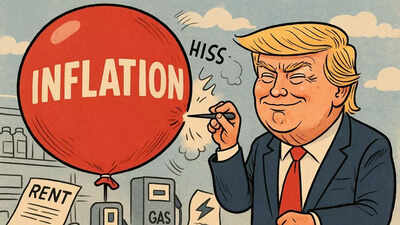US inflation cooled to 3% in September 2025, offering relief to households after nearly two years of rapid price increases. The reading came in slightly below expectations, signaling that the Federal Reserve’s efforts to control prices are gaining traction.
Key Takeaways
- September inflation slowed to 3% year-over-year, below the 3.1% forecast
- Core inflation (excluding food and fuel) remained steady at 3%
- The Fed may consider interest rate cuts if this trend continues
- Global economies, including India, could benefit from US stability
September Inflation Report Details
The latest Consumer Price Index data, delayed by a brief government shutdown, showed prices rose 3% compared to September 2024. Month-over-month inflation increased by 0.3%. This marks significant progress from the pandemic-era peak above 8%, though it remains above the Fed’s 2% target.
What This Means for Consumers
The inflation slowdown could bring tangible benefits:
- Cheaper loans: Potential Fed rate cuts may reduce EMIs on home and car loans
- Better savings value: Your money maintains more purchasing power
- Economic stability: Controlled inflation supports business growth and job creation
The US economy’s direction affects global markets, including and international trade patterns.
Inflation Background and Trends
Post-pandemic supply chain disruptions and government stimulus measures triggered the initial price surge. The Fed responded with aggressive rate hikes that gradually brought inflation down from over 8% in 2022 to around 2.7% by mid-2025.
Recent import tariffs and service costs caused a temporary rebound, but the September data suggests renewed easing. Some economists now view 3% as a potential “new normal” for inflation.
What to Watch Next
Several factors will determine whether the inflation slowdown continues:
- Upcoming Fed meeting: Potential interest rate decisions
- Employment data: Job market strength influences spending and inflation
- Trade policies: New tariffs could increase certain product costs
- Global inflation trends: Other major economies also reporting around 3% inflation
Why Caution Remains
While encouraging, 3% inflation doesn’t mean the crisis is over. Prices continue rising, just at a slower pace. Essential expenses like rent, healthcare, and groceries remain elevated for many families. External factors like oil price spikes could reverse recent gains.
The bottom line: inflation slowing brings relief rather than resolution. The Fed’s upcoming decisions will determine how quickly economic stability returns.




